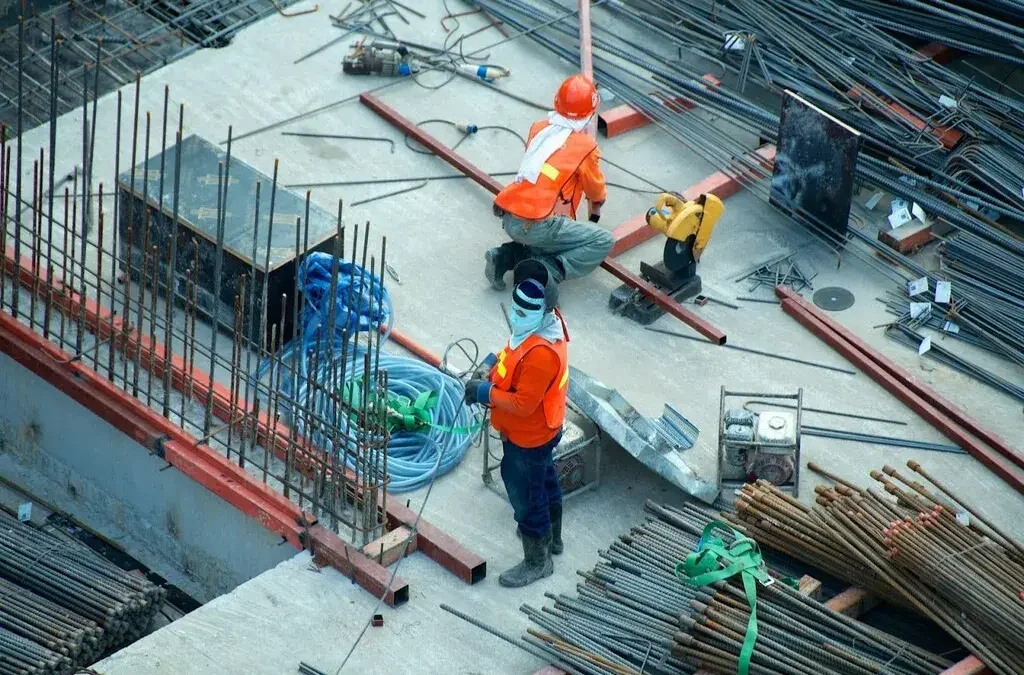Explore this post with:
Major construction failures rarely result from a single catastrophic event. They typically develop when small, unnoticed risks spread through interconnected systems over time. Recognising these patterns helps project teams create early warning systems to stop minor issues from growing into major threats. Studies show that small problems like design errors or missed inspections often combine to cause larger failures.
The key challenge is building protections into these complex risk networks rather than trying to prevent every possible mistake. Once problems become obvious, it is often too late to fix them, so teams need systems that can detect and contain risks early. These preventive measures, similar to safety features in other industries, could transform how construction projects manage risk.
The Compound Risk Phenomenon
Seemingly insignificant problems gain destructive power through project interdependencies. Engaging construction management risk services during the planning stages helps identify these hidden connections. Their specialised analytics reveal how a two-week delay in window deliveries might trigger concrete pumping bottlenecks that then stall interior fit-outs, a chain reaction conventional risk assessments often miss.
Weather Ripple Effects
A few rainy days may appear manageable until secondary impacts are considered. Moisture-sensitive materials stored onsite may become unusable, while rescheduled trades create workforce stacking that stresses site logistics. Advanced projects now track weather probabilities against critical path activities, moving high-risk work to optimal periods rather than relying solely on favourable weather conditions.
Labour Market Dominoes
Losing a single specialist installer can paralyse multiple trades. When electrical rough-in crews depart for higher-paying projects, their absence delays drywall teams, which then push back flooring contractors. Smart operators maintain real-time labour market dashboards, adjusting wages or schedules preemptively when regional demand spikes threaten key trades.
Material Quality Chain Reactions
Accepting marginally substandard structural steel to maintain schedules might seem reasonable until weld failures require destructive testing, creating rework cycles that ultimately consume more time than waiting for proper materials. Progressive quality protocols now include decision trees showing the true cost of material compromises across all affected workstreams.
Documentation Time Bombs
Approval delays for one shop drawing appear isolated until they hold up procurement for twenty dependent components. Digital twin systems now visualise these documentation bottlenecks, allowing teams to prioritise review sequences based on downstream impacts rather than submission dates.
Financial Contagion Risks
A minor cost overrun in one package can have disproportionate effects when it consumes contingency funds that are needed elsewhere. Sophisticated cost models now distribute reserves across risk clusters rather than individual work packages, preventing localised overruns from starving unrelated but critical activities.
Interface Blind Spots
The handoff between foundation and structural steel teams may seem straightforward until misaligned anchor bolts require expensive remediation. Advanced projects create 4D interface maps that show how each trade’s work affects others across time, with dedicated coordinators managing these transitional risk zones.
Regulatory Cascade Effects
A single code interpretation change can render months of design work invalid. Proactive teams maintain regulatory change logs tied to project milestones, allowing early detection of pending rule modifications before they trigger costly rework.
The Early Warning Mindset
Traditional risk management focuses on assessing the probability and impact of potential risks. Truly resilient projects incorporate velocity tracking, monitoring how quickly risks propagate through systems. This third dimension helps teams distinguish between contained issues and those requiring immediate intervention before they contaminate entire programs.
Organisational Immunity
Just as pathogens exploit biological weaknesses, construction risks thrive in fragmented teams where critical information remains siloed. Establishing cross-functional risk review groups creates a form of organisational “herd immunity,” where collective vigilance spots emerging threats that individual managers might dismiss as isolated issues.
Supply Chain Fracture Points
A single supplier’s financial instability can disrupt multiple phases of a project. For example, a bankrupt insulation manufacturer may force substitutions that require redesigns in fireproofing, acoustics, and energy modelling. Leading firms now conduct real-time supplier health monitoring, diversifying sources before disruptions occur.
Technological Dependencies
Over-reliance on a single software platform can backfire if updates introduce bugs that clash with existing workflows. When a scheduling tool glitch misallocates crane time, the resulting delays can ripple through concrete pours, steel erection, and façade installations. Resilient teams maintain parallel manual tracking systems as fail-safes. One digital hiccup shouldn’t paralyze an entire project, smart teams build redundancy into their systems just as they reinforce their structures.
Psychological Risk Blindness
Human nature leads teams to underestimate the accumulation of small risks. A project manager might ignore minor safety violations until a near-miss forces a full work stoppage. Behavioural risk training helps teams recognise normalised deviance before it escalates into crises. Like a frog in slowly boiling water, crews adapt to creeping dangers until the damage becomes irreversible, making proactive intervention the only true safeguard.
The Resilience Imperative
Construction projects collapse under cascades, not single events. True risk management isn’t about preventing the first domino from falling, it’s about ensuring no chain reaction follows. Teams that map hidden connections between delays, defects, and decisions don’t just survive crises; they design projects where failures can’t propagate.
The lesson is clear: In complex builds, every minor issue carries systemic consequences. What we dismiss as a small problem today often reveals itself tomorrow as the root of a preventable disaster. The question isn’t whether risks will emerge, but whether your systems will contain them.
In Case You Missed It!
About the Author: Nishant Desai
Nishant Desai has over 8+ years of experience in SEO and blogging. His blogging expertise can organically increase online visibility and traffic for blogs and websites. With his SEO expertise, he has already contributed to iGeeksblog, Firstsportz, and Firstcuriosity. In addition, he can create content strategies, conduct keyword research, publish optimized blogs, and resolve technical issues.




